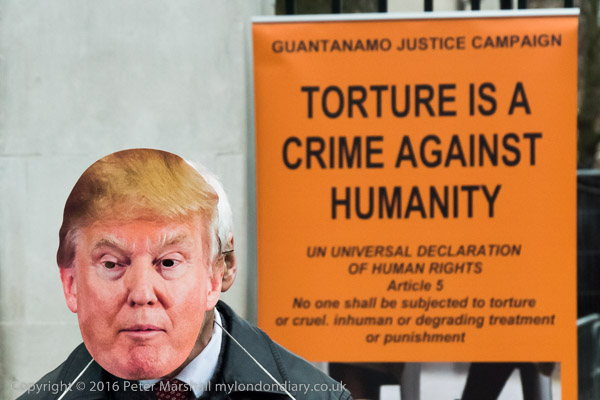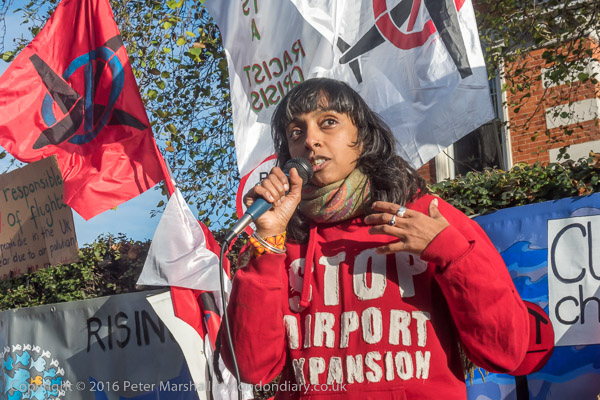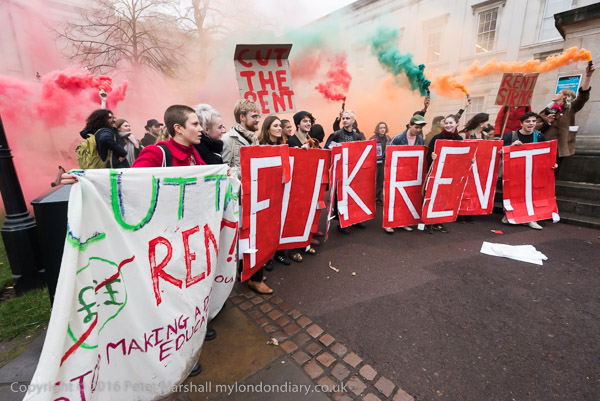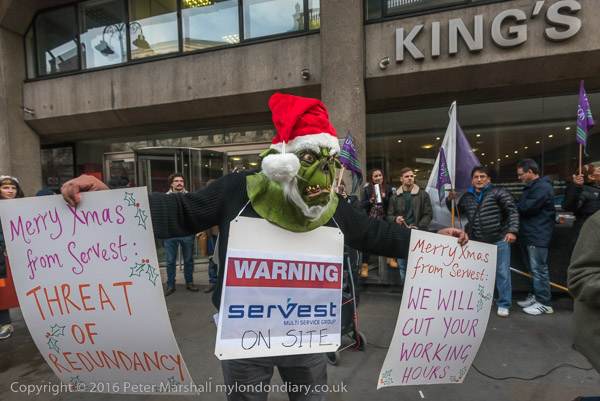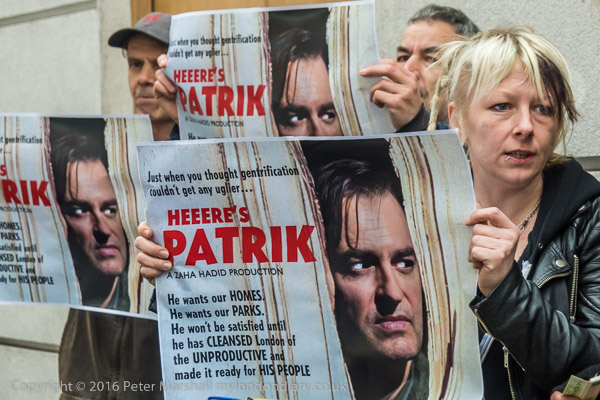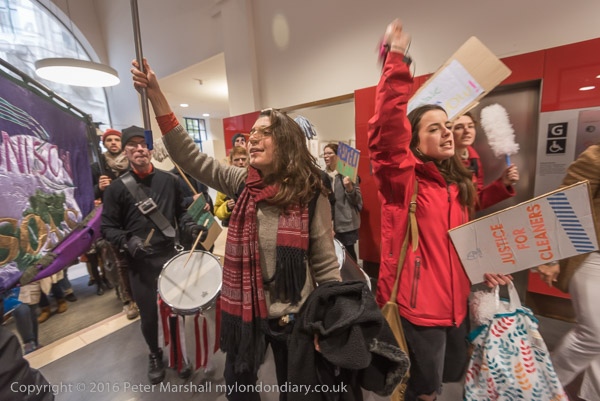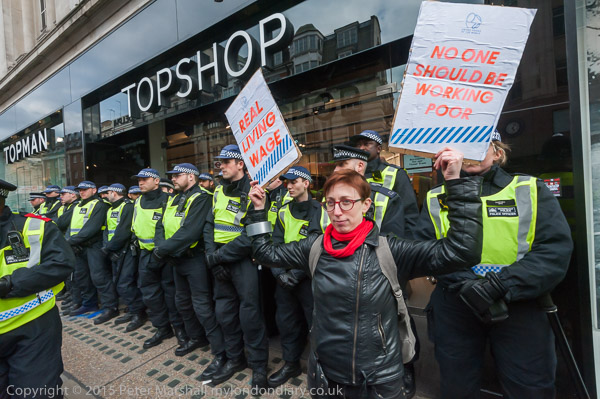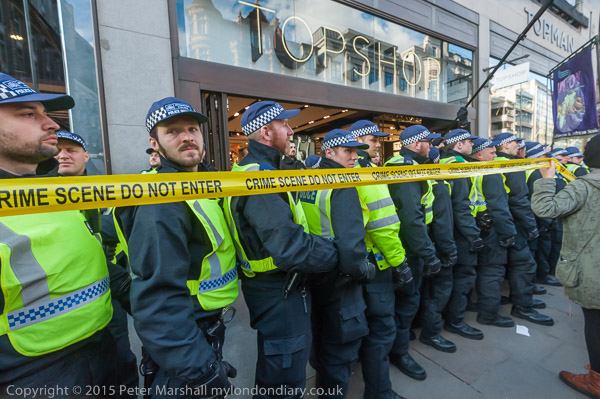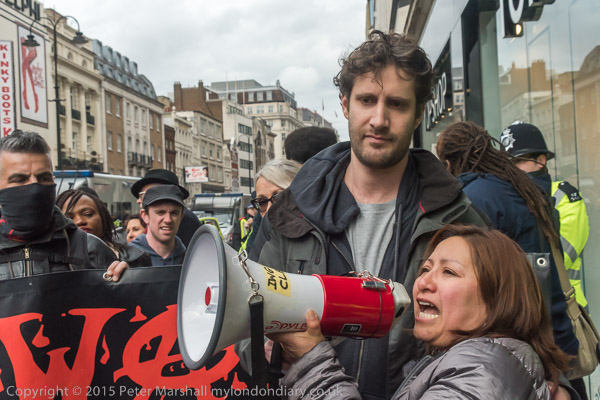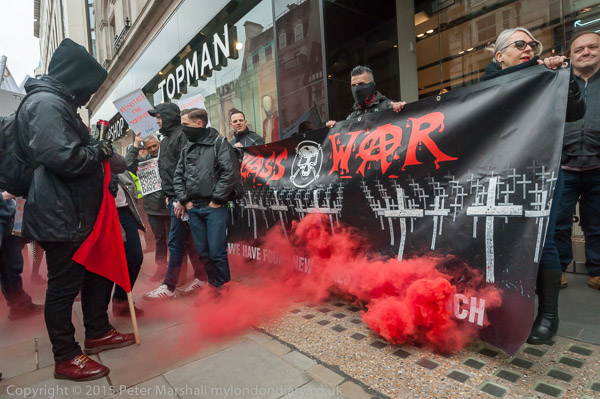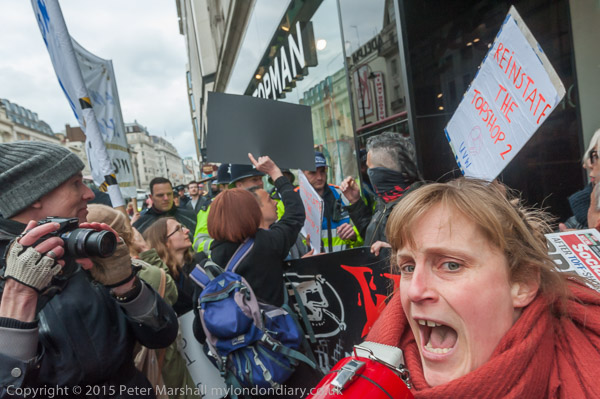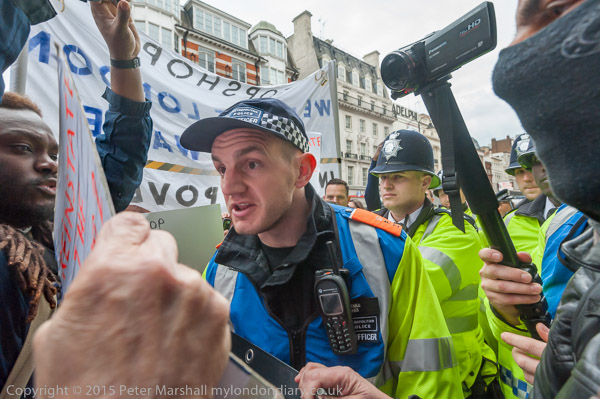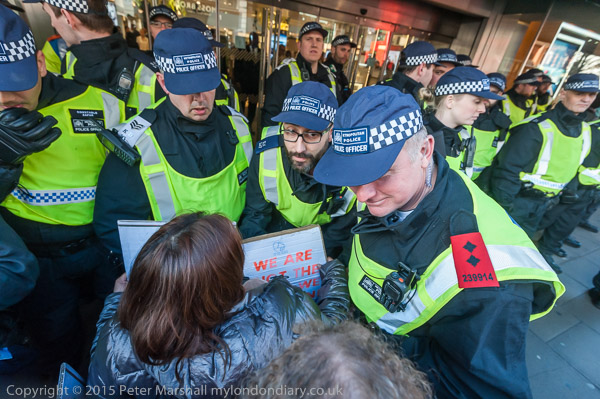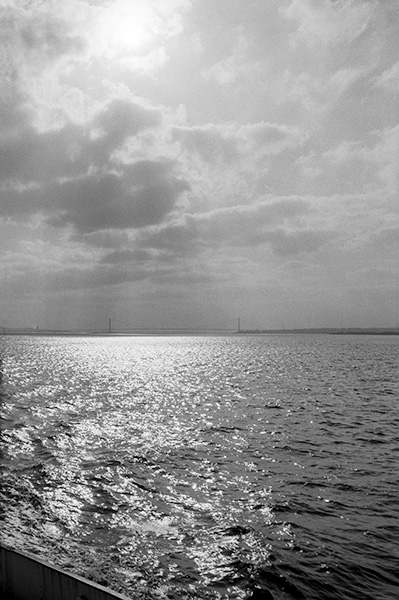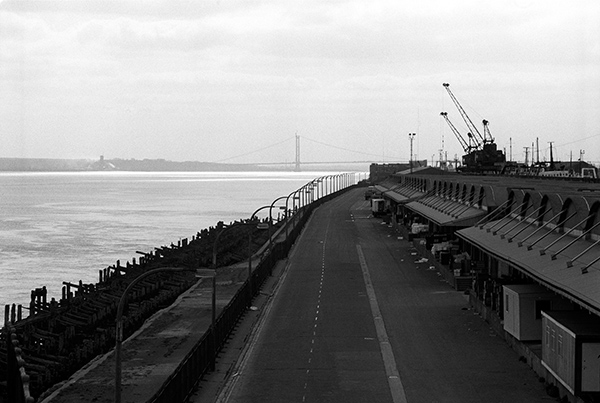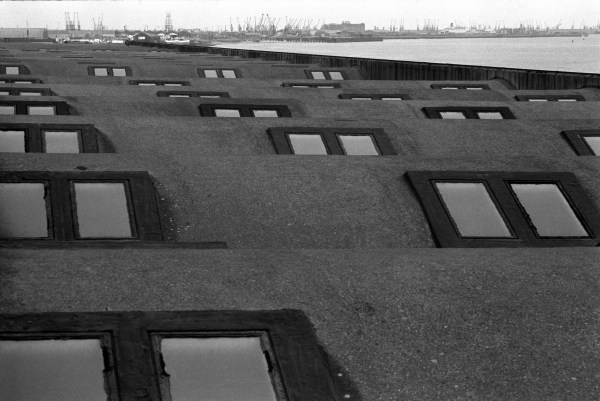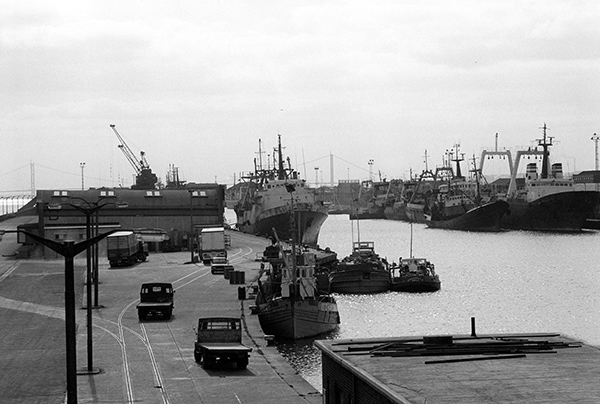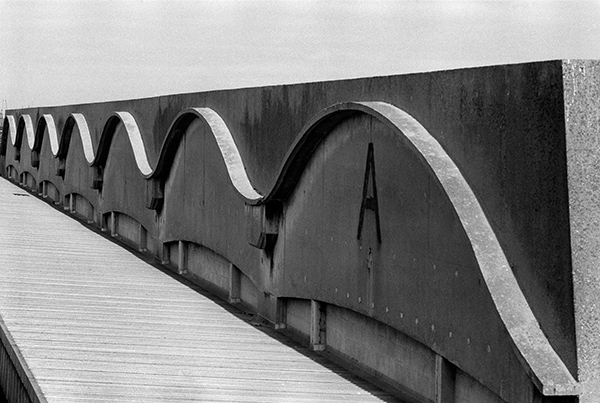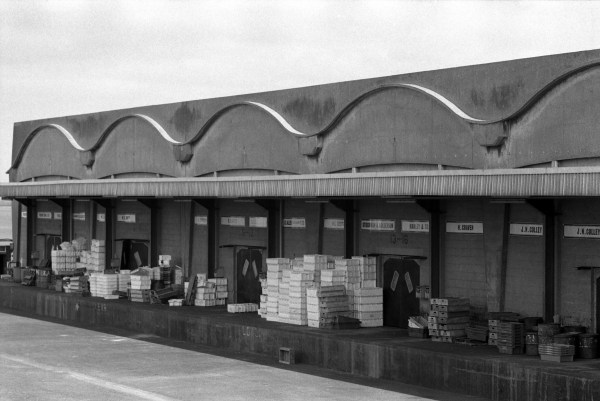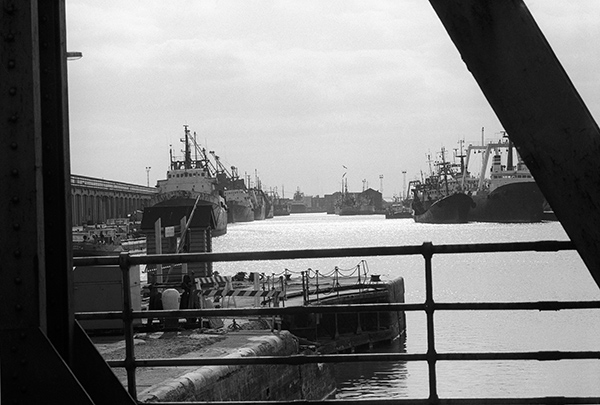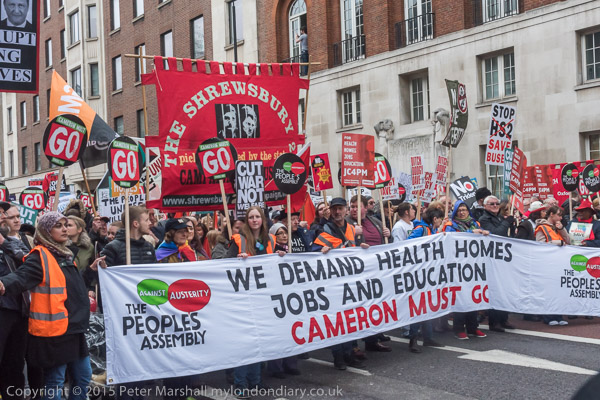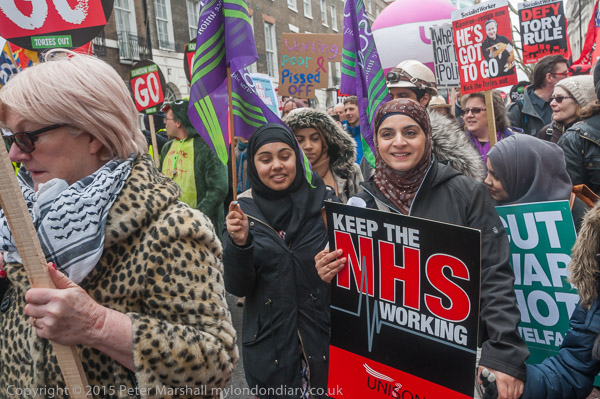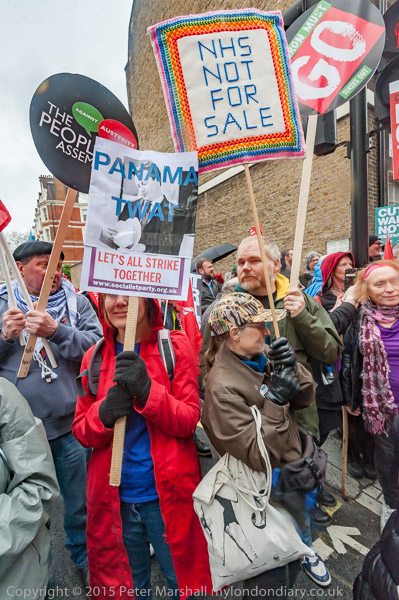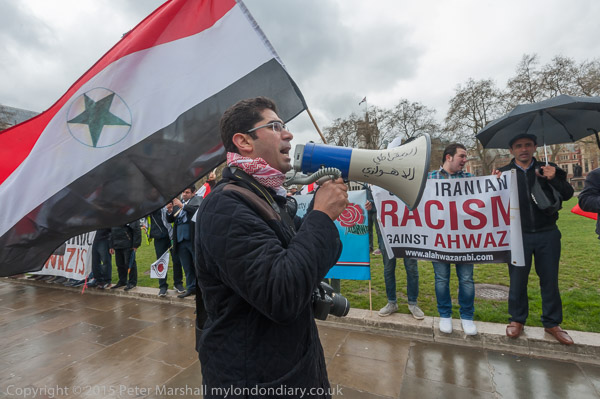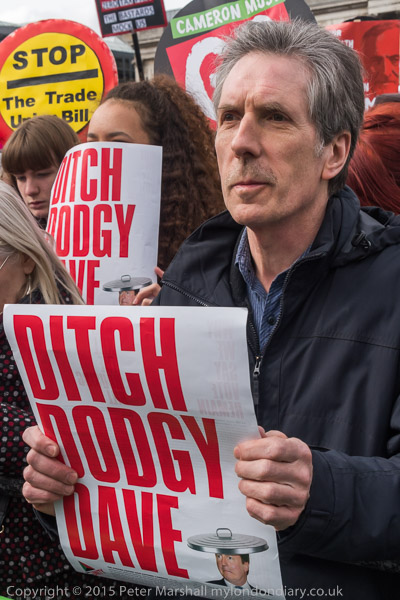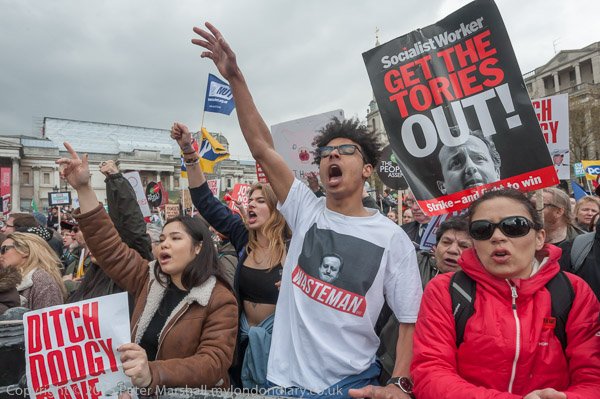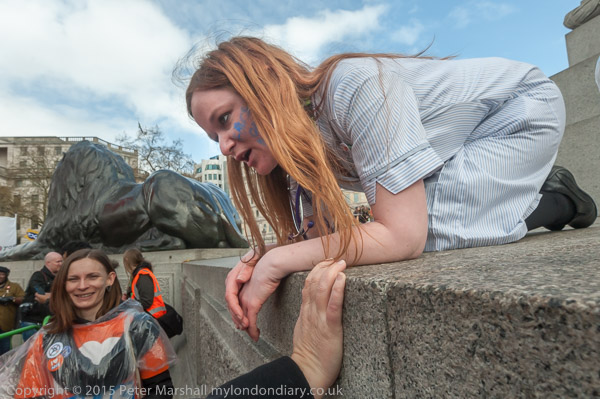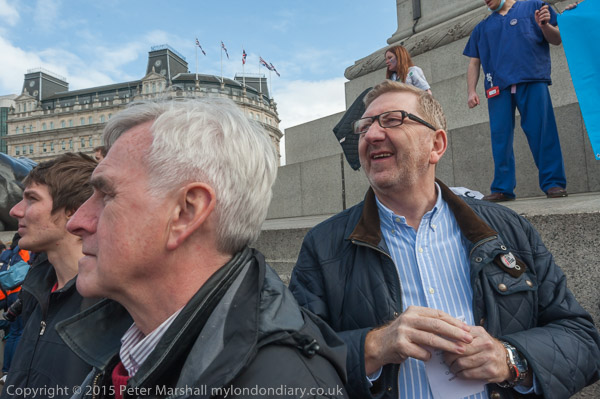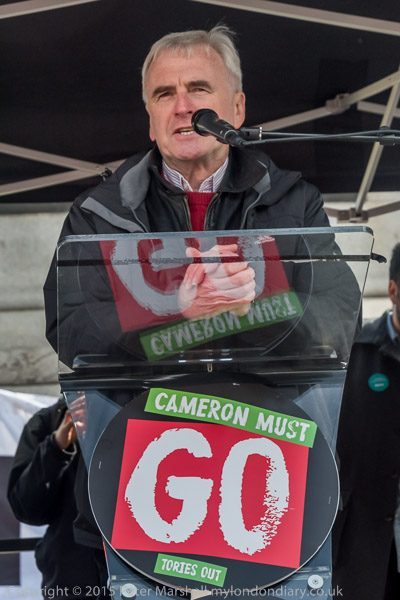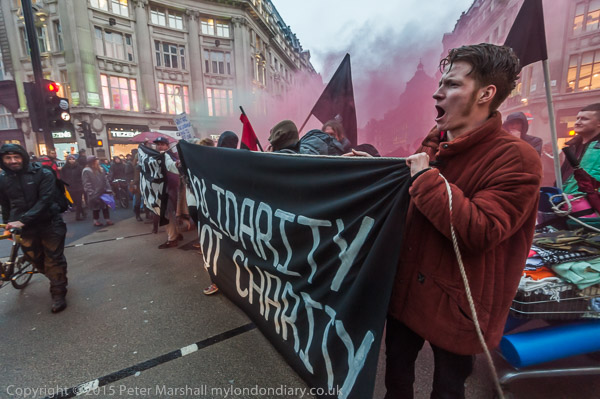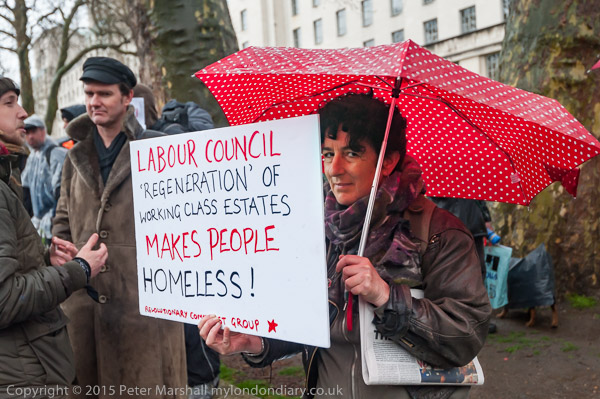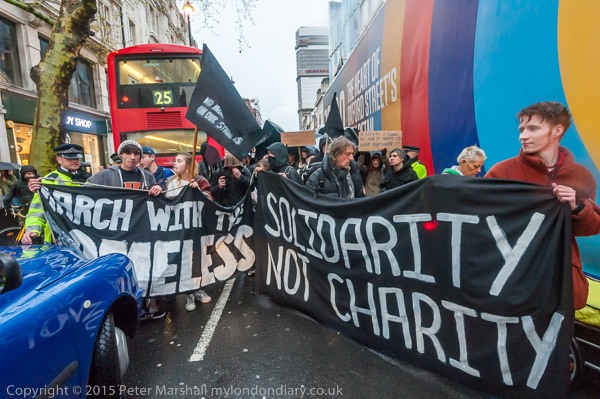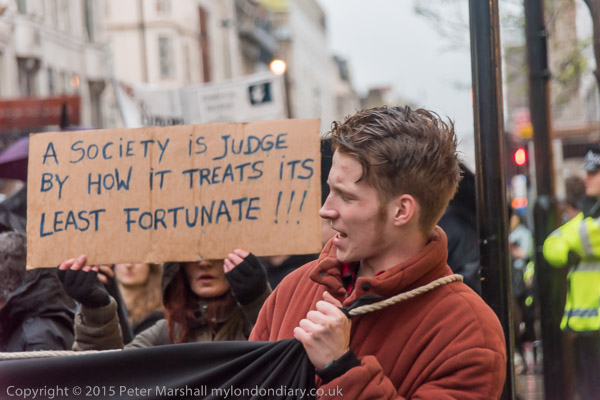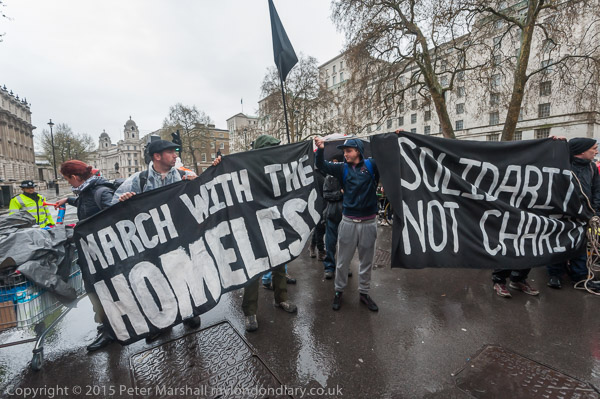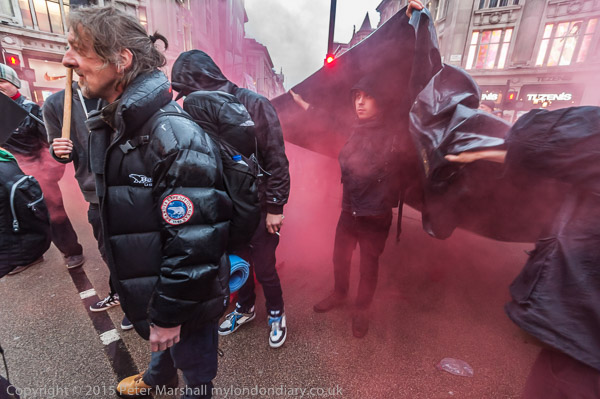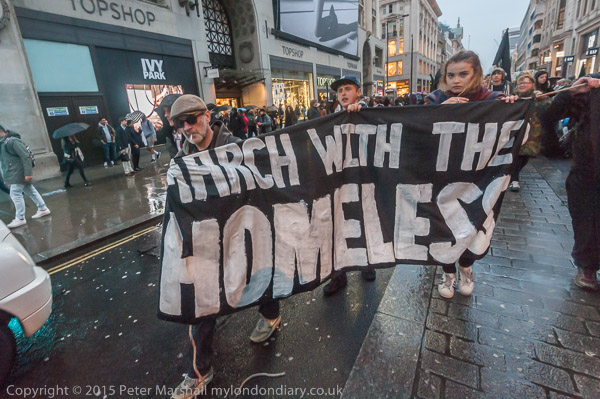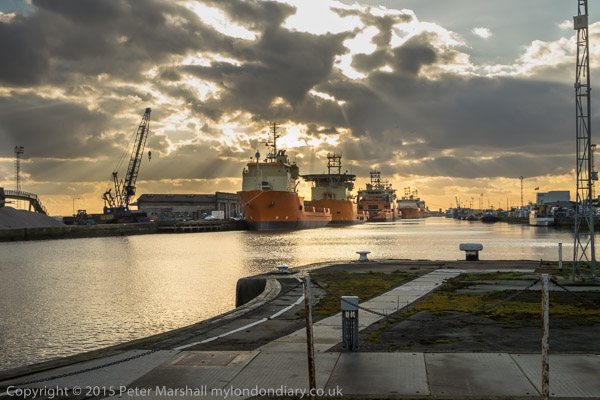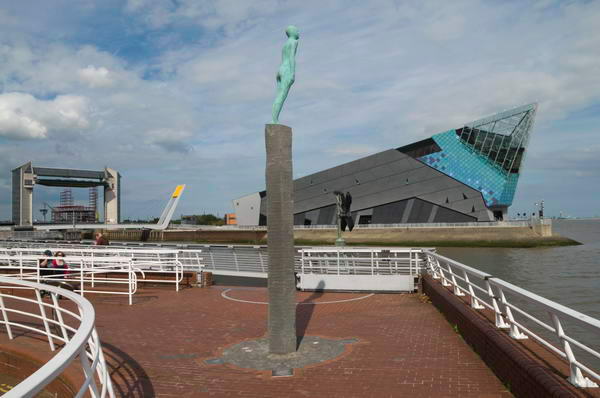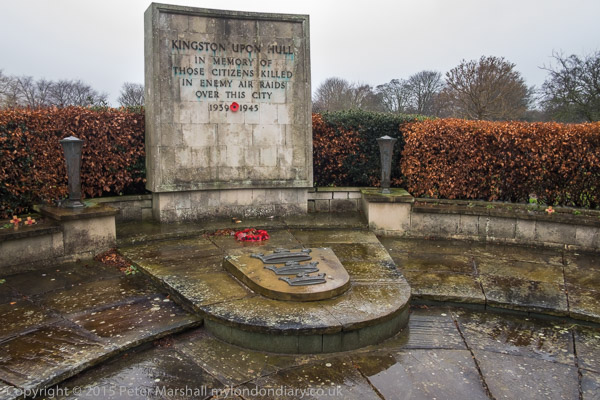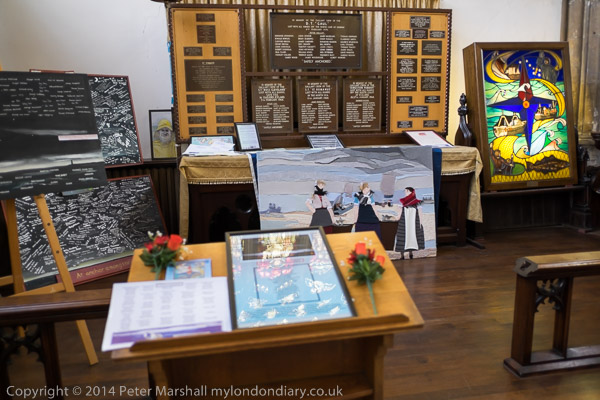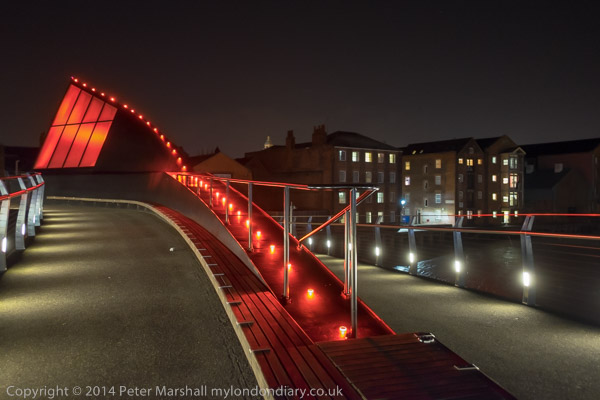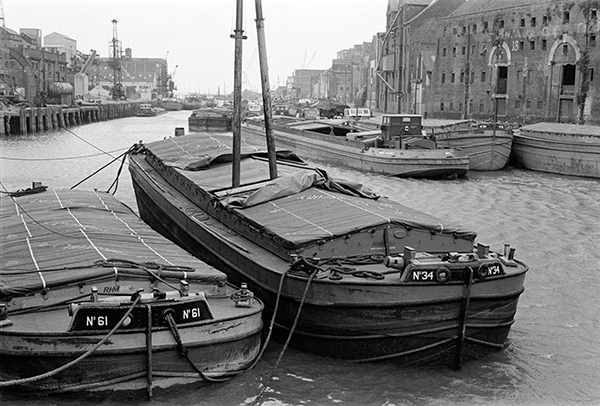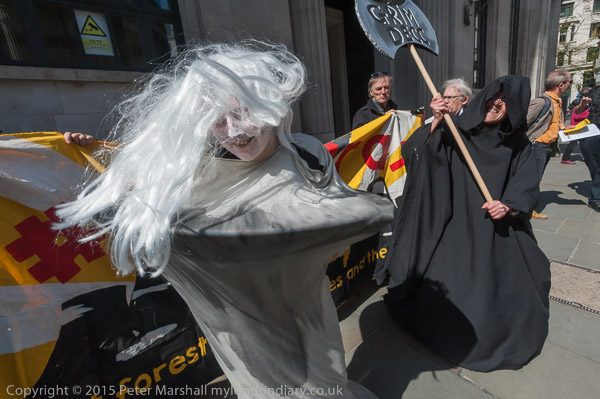
The ‘Grim DECC’ attacks a Drax cooling tower with his axe
Some protests are rather drab, with little visual material to work with, which can make for a hard time for the photographer. I like the challenge of photographing people, and there are always people to photograph, but the problem is to get those people to visually express something about the protest. Unless of course they are celebrities, names the papers lap up and will publish almost any picture of- though sometimes they are inundated with pictures of them and even if your photographs are better than the rest, the chances of an editor even looking at yours are small.
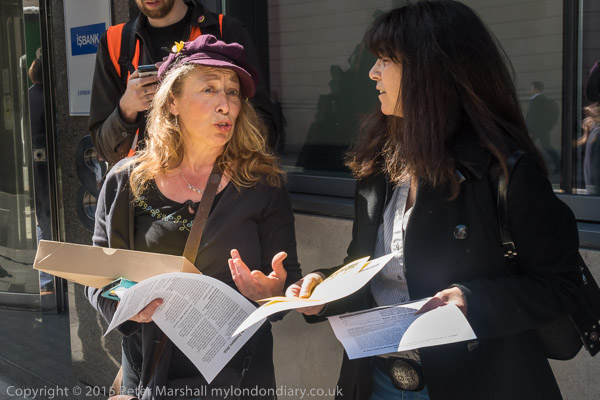
Celebrities aren’t any more interesting to me than the next guy, though some people are more interesting to photograph than others. Including some well-known people, though others don’t impress me, particularly some women who hide their faces behind a heavy mask of makeup which robs them of life. Protesters – and most people I watch avoiding eye contact when I’m sitting on the tube – are generally more interesting.
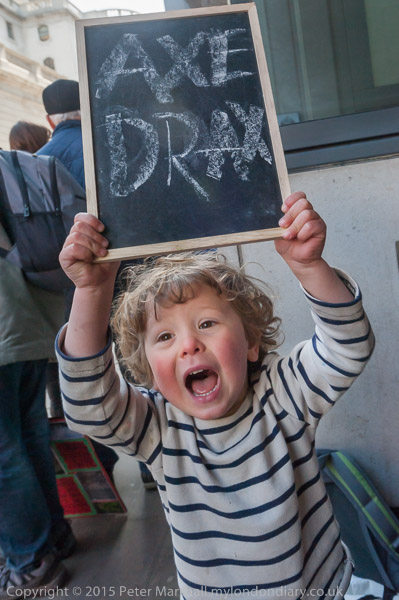
I’m often surprised at how poor some of the pictures of people we see in the press are. And I don’t mean the amateur snapshots which might be the only available image of a murder victim, but the work of professional photographers. Of course editors sometimes deliberately pick bad pictures because they make the subjects look bad. The kind of images that I usually don’t bother to import onto my computer and disappear when the card is formatted ready for the next day’s work.
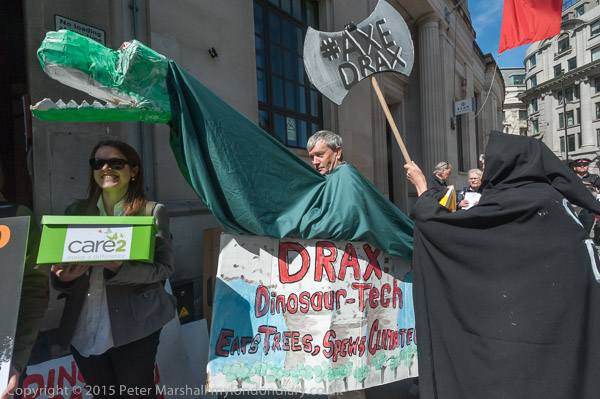
Axe Drax presents a different challenge, with an embarrassment of symbols – a Draxosaurus, a cooling tower and a grim reaper with his ‘Grim DECC’ axe, and some splendid banners as well as the people. I’ve photographed the Draxosaurus a few times now, and I think I have not yet managed to get a good picture – and I do wonder how many people who see it understand what it is about. The cooling tower is much better, though sometimes hard to see it is a cooling tower in photographs, and the Grim Reaper is fine if rather hard to see where he fits in – and the DECC is certainly not attacking Drax or its cooling tower, rather cosseting them – it’s axe is reserved for green initiatives.
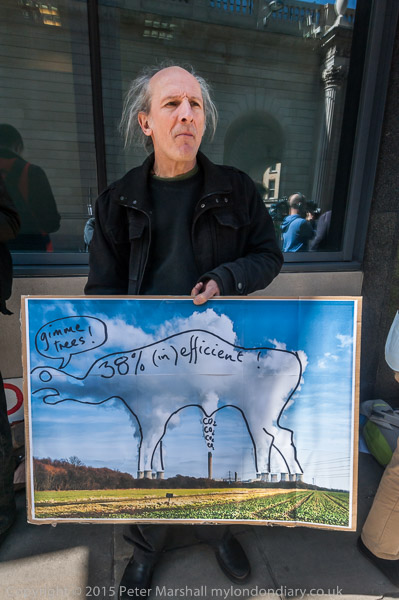
Drax is about dirty coal and environmentally unfriendly biomass – which is benefitting from green subsidies, while genuinely green developments are getting sidelined. It’s about huge CO2 emissions, the devastation of large areas of Colombia with open-cast mining. And while I may get some interesting images, it sometimes feels like I’m trying to write a story in English with only a Cyrillic font.
Physically it’s also difficult space to work in, with a narrow pavement in front of the Grocers Hall with a fairly steady stream of pedestrians. The City of London police keep telling me not to obstruct the pavement most of the time I’m taking pictures – and object when I stand – as they are – in the gutter. For quite a few of these pictures I not only had to look to see the subject, but also to see when the police had turned away and I could get into a suitable position.
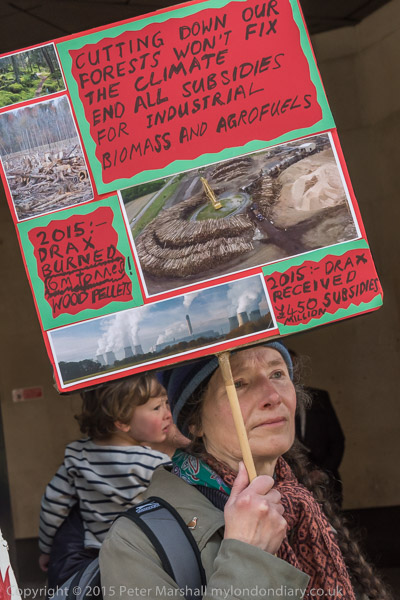
It’s actually inevitable that this pavement will be somewhat obstructed – and it would be sensible and cause little obstruction to road traffic, which isn’t particularly heavy and gets held up by the traffic lights anyway – to put down a few cones to give a yard or so more to allow free movement along the pavement for pedestrians. And to get those officers off my back. There probably is a limit to the number of times they will warn me I’ll be arrested for obstructing the pavement before they really do, and I think on this occasion I came pretty close – despite being careful not to actually get in the way of people who were walking past.
More pictures at Drax AGM Biomass opposition and more about the campaign on the Biofuelwatch web site.
